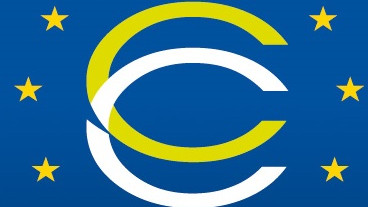EU Code of Conduct for Data Center Energy Efficiency (Transcript)
Making a data center environmentally friendly and energy efficient offers a range of advantages for the operator. The reduction in power consumption offers cost benefits which can increase margins or flow on directly to the end customer, making the data center more competitive. Being green is also a selling point for enterprise customers interested in reducing their carbon footprint. Becoming green also means time spent optimizing processes and improving systems, a challenging but rewarding process.

dotmagazine’s Judith Ellis talks to ebrc's Bruno Fery about the advantages of going green. Listen to the around 14-minute interview here or download the audio for later.
Transcript
DOTMAGAZINE: Bruno, can you tell me a bit about the Code of Conduct? What is the goal of the European Code of Conduct for data centers?
BRUNO FERY: The European Code of Conduct for Data Center Energy Efficiency, created in 2008, is a voluntary initiative that aims to reduce the environmental, economic, and energy supply impacts on data centers, both for new ones or retro-fitted ones. The energy saving focuses on two main areas: IT electrical load and facility load – the mechanical and electrical systems that support IT electrical load. It is important to say that it is a voluntary initiative. Moving on to what data center operators need to do to meet the criteria; the core of the program is a registration form, signed by the participants in which the participant commits to the four main criteria. Firstly, an initial energy measurement and energy audit to identify the major energy saving opportunities. The second one is an action plan that must be prepared and submitted to the European Commission. Once the action plan is accepted, the participant status will be granted and the participant will be asked to implement the action plan according to the agreed timetable. The last one is to monitor the energy consumption on a regular basis in order to see progress over time. Now, I think that 73 organizations have at least one data center (DC) approved as participant, and the total number of DCs approved is 184 (of 220 as a total of DCs requested). And now the 2017 best-practice guideline is also available with version 8.1.0 for the current participants and the new ones, as best practices.
DOT: So what are the biggest challenges for data center operators, if they want to meet these guidelines?
FERY: From my point of view, I think that the achieved results and energy efficiency improvements cannot be carried out without the participation of all stakeholders – for us, clients, suppliers, and also EBRC’s engineers, as well as a commitment from the management of EBRC because we also had to invest in new technologies and also in specific training for engineers. Technical experts have been dedicated to the energy saving program for more than 10 years.
DOT: What are the advantages of going through the process?
FERY: First of all, I just want to mention that a participant of the European Code of Conduct for DC Energy Efficiency makes a strong, but not legally binding, commitment to code-of-conduct requirements. As a participant, we can benefit from shared information between multiple and major data center operators on the one hand for the design, and on the other hand for the operations. Uptime makes a good statement regarding the aspects that you have to keep the end in mind, in fact. When you start a project of retro-fitting or a new DC, you have to start with the end in mind. It is the complete set of activities, from the design to the DC management operations. To go on, I think being a participant of the Code of Conduct is well appreciated by our clients because of a sustainable image, but also our clients can benefit from cheap operational costs through the low price of energy, including the Power Usage Effectiveness (PUE). It is a double advantage for our clients and also for the image of EBRC to bring down the energy cost and to reduce the carbon footprint, and also to be in phase with COP21. With a national regulation in Luxembourg, we also have to reduce our impact on the environment by the end of 2020 – we have to reduce by 7% the impact of our data center on environment in Luxembourg. So, we are committed through the European Code of Conduct, but also for national regulations, and the target is also to be in phase with the agreements of the new COP21. For the values of the EBRC, we have five values: E.A.R.T.H (Excellence, Agility, Responsibility, Trust & Human) and one for our Responsibility:
“We understand our impact on the planet and take initiatives for a sustainable future”.
It is one of our major values and we have been working on this value for more than 10 years. We integrated the Code of Conduct in 2010, but we have been working for 15 years in an energy savings program. With our engagement, we are also certified with ISO 14001 and ISO 50001, so the management of the environment and the management of the energy. It was very important for us and it is also important for the people who manage the data center, in fact, at EBRC.
DOT: Do you have any information about the general level of acceptance of the Code of Conduct? How well it is accepted by data center operators?
FERY: More than just Europe – because, if you check on the website of the Code of Conduct on energy efficiency for DC, you will see companies from the United States, for example. So, it is not restricted only to European companies. I think it was the first European initiative, introduced in 2008, regarding the data center energy efficiency and I see it as a reference for other countries outside Europe.
DOT: EBRC has been through this entire process, and you say it is an advantage to your customers. What measurable impacts do you have seen?
FERY: On a fixed parameter, we have more than 7% of carbon footprint reduction, for example, related to the agreement with FEDIL, the Ministry for the Environment, and the Ministry of Economy that we have signed in Luxembourg.
DOT: And do you notice it in the costs?
FERY: The reduction of cost benefits are for our clients. We have a very, very competitive cost for energy for our clients, but there is no benefit for us. The advantage for us is also to be competitive with other major data centers in Europe or outside of Europe. In Luxembourg, we have a competitive public price for electricity, but we have also a very, very competitive PUE. For us it is a commercial objective, but we have no benefit in Euros, it is just for our clients.
DOT: You said before that the European Code of Conduct covers energy efficiency for the data center facilities and separately energy efficiency for the IT. Where is the most power spent and where is the most power saved between the IT and the facilities?
FERY: From my point of view, I think for IT electrical load our progress is very impressive with our cloud services in fact. With the cloud in IT, you reduce considerably your energy consumption of servers and so on because you can have multiple systems on the one server – a major energy saving. For the facility load, the major gains you can have is mainly for mechanical systems and mainly for cooling in fact. The future of cooling consists of two parts: to increase the temperature of the IT room for the server to have more than 30°C, for example, in the intake of the servers and to have free cooling for the cooling system. The future is to use only outside air to cool the IT room. I think that it is the future. And no more energy to do that. But we have to increase the temperature of the intake of the servers, and ASHRAE (a worldwide reference) and the Code of Conduct recommend IT manufacturers to increase the acceptable temperature for a server. In the future maybe it will be more than 40°C, but now it is 27°C as recommended by ASHRAE with TC 9.9.
Bruno Fery is currently Head of Data Centre Services at EBRC. Before joining EBRC in 2006, Bruno was appointed Head of Engineering, Safety&Security in charge of buildings and branches at a major bank in Luxembourg from 1995 to 2006 after ten-year career in facility management.
In 2010, Bruno was certified Accredited Tier Designer. Bruno Fery has broad experience in international certifications, design and management of data centers, and infrastructure strategies, and actively contributes to EBRC’s international and national business development.
Please note: The opinions expressed in Industry Insights published by dotmagazine are the author’s own and do not reflect the view of the publisher, eco – Association of the Internet Industry.



